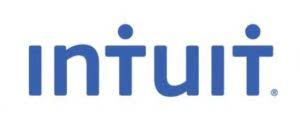
The income-expenditure account of the business organization is related to the corresponding accounting https://www.bookstime.com/articles/what-are-income-statement-accounts period. You want to avoid the financial confusion of having last period’s numbers overstaying their welcome. Adhering to this order – adjusting then closing – ensures your financial narratives don’t become tangled and that every period’s reporting is as crisp as a freshly printed playbill. LiveCube Task Automation is designed to automate repetitive tasks, improve efficiency, and facilitate real-time collaboration across teams.
Cash Basis and Accrual Basis Accounting-Definition, Features, Example, and Difference Notes with PDF
At the start of the new accounting period, the closing balance from the previous accounting period is brought forward and becomes the new opening balance on the account. Other than the retained earnings account, closing journal entries do not affect permanent accounts. Permanent accounts, in contrast, are the sturdy oaks, steadfast year after year. They consist of assets, liabilities, including ignored accrued expenses as a form of permanent liability account, and most equity accounts entries that show the ongoing financial state of an entity.

Step #1: Close Revenue Accounts
Imagine you own a bakery business, and you’re starting a new financial year on March 1st. After the posting of this closing entry, the income summary now has a credit balance of $14,750 ($70,400 credit posted minus the $55,650 debit posted). Closing all temporary accounts to the income summary account leaves an audit trail for accountants to follow. The total of the income summary account after the all temporary accounts have been close should be equal to the net income for the period. The next day, January 1, 2019, you get ready for work, butbefore you go to the office, you decide to review your financialsfor 2019.

Preparing a Closing Entry
The first entrycloses revenue accounts to the Income Summary account. The secondentry closes expense accounts to the Income Summary account. Thethird entry closes the Income Summary account to Retained Earnings.The fourth entry closes the Dividends account to Retained Earnings.The information needed to prepare closing entries comes from theadjusted trial balance. You might be asking yourself, “is the Income Summary accounteven necessary?


Now, consider the advantages – software like this can take a load of data, apply predefined rules, and generate closing entries without breaking a sweat. Revenues and expenses find their way to the closing entries right places, calculations are double-checked by the system, and the end result is a set of financial statements that align with established accounting principles. In the realm of sole proprietorships and partnerships, drawing accounts are integral.
- The Printing Plusadjusted trial balance for January 31, 2019, is presented inFigure 5.4.
- We follow strict ethical journalism practices, which includes presenting unbiased information and citing reliable, attributed resources.
- The term can also mean whatever they receive in their paycheck after taxes have been withheld.
- That’s why most business owners avoid the struggle by investing in cloud accounting software instead.
- Dividends, representing earnings distributed to shareholders, are closed to the Retained Earnings account.
Companies are required to close their books at the end of eachfiscal year so that they can prepare their annual financialstatements and tax returns. However, most companies prepare monthlyfinancial statements and close their books annually, so they have aclear picture of company performance during the year, and giveusers timely information to make decisions. And so, the amounts in one accounting period should be closed so that they won’t get mixed with those in the next period. As you will fixed assets see later, Income Summary is eventually closed to capital. Any remaining balances will now be transferred and a post-closing trial balance will be reviewed. Closing entries are the journal entries used at the end of an accounting period.
- By leveraging advanced workflow management, the no-code platform, LiveCube ensures that all closing tasks are completed on time and accurately, reducing the manual effort and the risk of errors.
- Now that the journal entries are prepared and posted, you are almost ready to start next year.
- These accounts are closed directly to retained earnings by recording a credit to the dividend account and a debit to retained earnings.
- They track the amounts the owner or partners withdraw for personal use throughout the year.
- At the core of this suite is the Financial Close Management solution, which simplifies and accelerates financial close activities, ensuring compliance and reducing errors.
They’re designed to make the closing process more reliable and efficient. Accurate closing entries ensure that there’s no question about the legitimacy of your financial statements. They provide auditors and stakeholders with a clear trail of the company’s financial activities and confirm that you’re playing by the rules, from the IRS to the SEC and the GAAP standards. When auditors see that your figures match up across the board—showing no discrepancies between ledgers and statements—they know they’re working with a company that values precision and takes compliance seriously. The retained earnings account is reduced by the amount paid out in dividends through a debit and the dividends expense is credited.
- In this context, a well-maintained FAQ section can be a valuable resource for those new to these concepts, ensuring they understand the impact of these transactions on owner’s equity.
- Essentially resetting the account balances to zero on the general ledger.
- Income summary effectively collects NI for the period and distributes the amount to be retained into retained earnings.
- This crucial step ensures that financial records are accurate and up-to-date for the next period, making it easier to track the company’s performance over time.
- In the next accounting period, these temporary accounts are opened again and normally start with a zero balance.
- Revenue, expense, and dividends or withdrawals accounts are closed at the end of an accounting period.

The balances from these temporary accounts have been transferred to the permanent account, retained earnings. Notice that the balances in the expense accounts are now zeroand are ready to accumulate expenses in the next period. The IncomeSummary account has a new credit balance of $4,665, which is thedifference between revenues and expenses (Figure5.5). The balance in Income Summary is the same figure as whatis reported on Printing Plus’s Income Statement.
